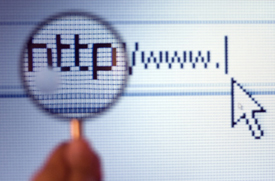As a web design company, we very often run into clients who have a domain name (e.g. yourcompany.com) registered but have no idea where it was registered or how to access it. This often happens when the domain was registered by an employee or previous owner that has left the company and didn’t pass on the details when they left. This can create a lot of headaches when you need to build a new website or change something about your email setup in the future. This article shows you some simple steps you can take to safeguard your domain registration and avoid problems down the road.
Start with the right mindset
Your domain name is a key asset of your business and should be treated with the same care as the combination to your safe. Your domain is often tied to your website and your email, among other services in your organization. If you think about how much you use email in your day-to-day business dealings, you will see why it is important to ensure your domain is safe and accessible for you to make changes to it when needed.
If you have hired a professional agency to manage your domain name, then likely they will safeguard all of these details for you and keep your domain settings up to date to ensure you don’t lose control of it.
But if you are going to register your domain yourself, then make sure you follow these safeguards to protect your domain:
Steps to take when registering your domain name
1. Document everything
Make sure that you document the following details of your domain registration:
- The name and full contact details of the company you registered the domain through (phone, fax, tech support email, address)
- The username and password that can be used to manage your account. Sometimes you will set these up when you register the domain, and sometimes they will email this information to you after your registration is completed.
- The registration details that are placed on the domain, particularly, the administrative email address. This email address is where important communications about the domain will go to.
Put these details in a secure and permanent place, such as your company operations manual, on a secure network drive, or somewhere where they can be easily accessed by authorized staff if needed.
2. Choose your administrative email address carefully.
Every domain has an administrative email address which is used for important communications about your domain. This email is also used to send approval requests for changes to the domain, which means that whoever can access this email essentially has control of your domain.
We strongly recommend setting the admin email on your domain to an email address that won’t expire at your company. This may be the email address of the owner(s) of the company, or a generic address like info@company.com or admin@company.com. Try to avoid setting the administrative email to a particular employee, for example, jsmith@company.com, because if they leave the company and their email is removed, it will complicate accessing the domain later.
3. Keep your domain details up to date.
If your company contact details change or the administrative email address for your domain is changing, make sure to update your domain records to reflect that. Most registrars provide a control panel you can login to update the details for your domain, and if you followed the steps above you should have those details documented.
Summary
If you are registering the domain yourself, these are very simple things you can do to save yourself a world of trouble later. Hiring a professional agency to handle the registration and manage the domain for you is another alternative which can save you time and safeguard your domain as well. Whatever you choose to do, make sure to do it right. You’ll thank yourself for it later!










